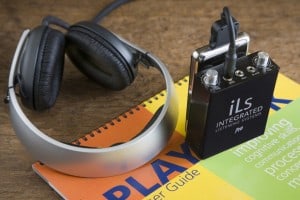G’s Story
Symptoms
G is a first-grade student who demonstrated significant difficulty in early literacy skills and auditory processing. G was diagnosed with a Central Auditory Processing Disorder. His teacher reported his skills were significantly below grade-level in phonological awareness, decoding, writing and listening/language skills. G’s independent writing in the fall was just random letters. He was not able to segment a simple word to write the sounds he heard without assistance.
He was receiving Academic Intervention Support services in reading and math as well as speech/language in school.
G had a history of high-anxiety. He had difficulty with change and demonstrated a low frustration-tolerance, particularly when engaging in academic or motor-related tasks. G responded well to structure, but struggled when there is a change to routine.

Pre- and Post-iLs Handwriting Samples
Presenting Problems & Findings:
- General gross-motor incoordination
- Anxiety surrounding school and homework
- Academic difficulties, particularly in reading and writing
- Auditory Integration deficit and a classic right ear advantage (left ear weakness)
- Auditory processing difficulties – particularly in decoding and tolerance fading memory
Intervention
G listened to a customized 23-program (each 80-minutes long) on the iLs Pro over 3 ½ months. Each session was broken into 40-min sessions, Monday through Friday. G also used the Interactive Language Program (ILP) every other day during the Transition and Activation phases.
Results
G has developed into a more confident and emotionally regulated child. Developments in these areas have allowed him to make gains in his academics and social interactions as well as in his risk taking and willingness to try new things.
Overall, he demonstrates significant changes in his overall self-esteem and emotional regulation. G is participating in classroom discussions and activities independently, without physical signs of anxiety. Socially, G shows confidence when working with peers during academic tasks. He presents as a generally happy child who is now excited to learn and be in school.
We cannot be more excited with the changes that we have seen in G. His willingness to make changes and the ability to persevere through difficult lessons has paid off in a big way!
– G’s Mom
Mom reports, “G was a very anxious child at the start of iLs. Transitions were very difficult for him and caused him much anxiety, often leading to headaches, behavioral outbursts and somatic complaints. Since the onset of iLs therapy, G has drastically decreased his anxiety in the home. He is more willing to adapt to unexpected changes in routine and does not obsess or worry about what is going to occur the following day.”
“He is excited to go [to baseball] and enjoys being part of the team. He is working to maintain eye contact with the ball and bat, as well as catching the ball during baseball. This is something he was not able to do before.”
G now completes his homework as soon as he gets off the school bus. In the evening, he is proud to sit and read to his younger brother as well as Mom and Dad. The bigger the audience, the happier G is to read!
Learn More

As a truly multi-sensory program, iLs is a drug-free therapy that integrates sound with movement and includes fun activities and exercises that can be done in the clinic, classroom and/or at home. Each session is spent doing creative and/or relaxing activities such as drawing, puzzles, fine-motor games, or just relaxing in a comfortable chair while listening to specially-treated music.
Learn how iLs influences reading ability by training the auditory channel for efficiency and accuracy through repeated listening and movement sessions.



 © 2025 Unyte Health US Inc.
© 2025 Unyte Health US Inc.